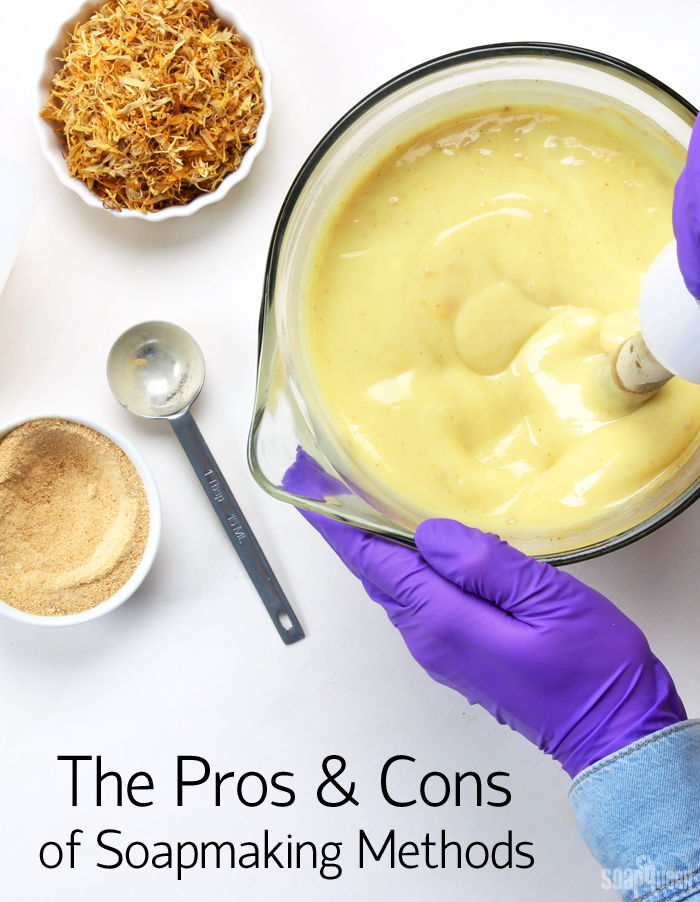
Years ago when I started soaping, after 6 failed Cold Process soap batches, I switched and focused on melt and pour soap. Eventually, I tackled cold process soap again, which then lead to trying hot process and rebatch. There are several other soaping techniques that fall somewhere in between, like CPOP (cold process oven process), HPOP (hot process oven process), but melt and pour, cold process, hot process and rebatch are the “main four.” Each of them creates a great bar of soap, but in very different ways.
There are pros and cons to each method, and every soaper has a personal preference. If you’re wondering which method may be the best one for you, I’ve included a roundup of the most obvious pros and cons of each method below. As I was writing this post, it dawned on me that some of the things I would consider a “pro,” might be another soapers “con.” It’s really all about personal preference, and the skill set of the individual soaper. What is your favorite soaping method, and why?
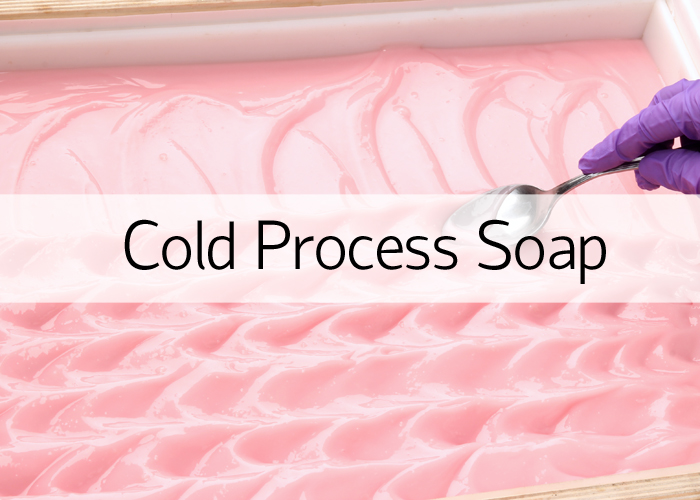
Pros:
- Allows you to customize every single ingredient to suit your personal preferences.
- You can add fresh ingredients like milk and fruit/vegetable purees because you control the saponification process.
- The trace of cold process soap batter can be manipulated for a wide variety of techniques and effects. Thin trace can be used to make swirls, while thick trace soap creates frosting.
- With so many technique options, it’s a great way to get creative. The sky is the limit!
- The thick texture makes it great for suspending heavier additives.
- Generally considered a more “natural” bar of soap.
Cons:
- Cold process soap must be made with sodium hydroxide lye, which can be dangerous when handled incorrectly. Learn how to handle it safely here.
- Cold process soap takes about 4-6 weeks to cure. The soap can be used before then, but it will last longer in the shower with a full cure.
- Some colorants tend to morph in the high pH environment of cold process soap, particularly some mica or FD&C based colorants.
- Fragrance oils can react with the high pH of cold process soap in negative ways, causing acceleration, ricing or seizing. Always make sure your fragrance behaves well in cold process!
- Vanilla color stabilizer is not reliable in cold process soap, and fragrance oils with a high amount of vanilla content will turn the soap brown.
- Because cold process soap batter is opaque, glitter does not show up very well when placed in the soap. Glitter still works great on top!
- Clean-up can be a long process depending on how many colors your soap was (more colors = more containers).
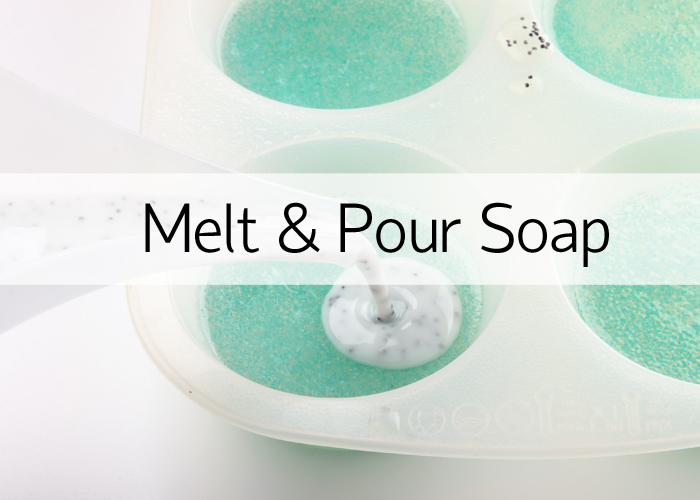
Pros:
- Great for beginners! You can do melt and pour with children as young as 4 with parental supervision.
- The base has already gone through saponification, so working with lye is not required.
- Does not require wearing safety gear because you’re not working with lye.
- Melt and pour soap is quick to make; it hardens in several hours and does not need to cure.
- Fragrance oils do not cause acceleration, ricing or seizing in melt and pour soap.
- You can use Vanilla Color Stabilizer to prevent vanilla discoloration in soap.
- In translucent varieties of melt and pour soap (Clear, Aloe Vera, Honey, etc.) light is able to shine through, making glitter and shimmery micas really pop!
- Melt and pour soap is great for creating extremely clean, straight layers. Just make sure to have some 99% isopropyl alcohol nearby so the layers stick together.
Cons:
- Because melt and pour soap contains extra glycerin, it is prone to glycerin dew/sweating.
- The base is not fully customizable. Because saponification has already happened, you cannot choose the oils/butters within the soap.
- Fresh ingredients like milk and purees will eventually go bad in the soap.
- Once melted, melt and pour soap is quite thin and fluid. Larger additives tend to sink to the bottom of the soap if not added at a cooler temperature.
- Melt and pour soap cools and hardens quickly. This means some swirls that can be made with cold process soap are not possible with melt and pour.
- Melt and pour soap can burn if it becomes too hot. Once burned, the base becomes thick, gloopy and difficult to work with.
- Clean-up is easy because your dishes are all coated in fully ready-to-use soap.
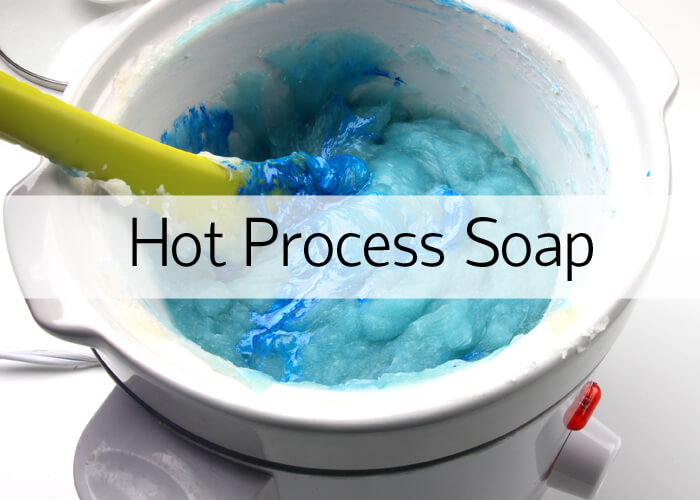
Pros:
- Allows you to customize every single ingredient, including fixed oils.
- The additional heat speeds up the saponification process. Three cheers for instant gratification; hot process soap can be cut within one day, and used right away.
- The bars have a “rustic” appearance with a less smooth texture than cold process. Whether or not you like this look is a personal preference.
- Can be made in a Crock-Pot or double boiler.
- The thick texture makes it great for suspending heavier additives.
- Generally considered a more “natural” bar of soap.
- Clean-up is easier because the soap in the slow cooker/Crock-Pot is already soap.
Cons:
- The thick texture of hot process soap makes some swirls and techniques, such as layering, very difficult.
- The bars have a “rustic” appearance with a less smooth texture than cold process. Whether or not you like this look is a personal preference.
- If your fragrance or essential oil has a low flashpoint, some soapers find the high temperature of hot process tends to “burn off” the fragrance, causing it to fade.
- As the soap cooks, it expands. Because of the possibility of it overflowing, it’s important to not leave it unattended.
- Difficult (but not impossible) to add fresh ingredients like milk and purees; they tend to scorch during the cooking process.
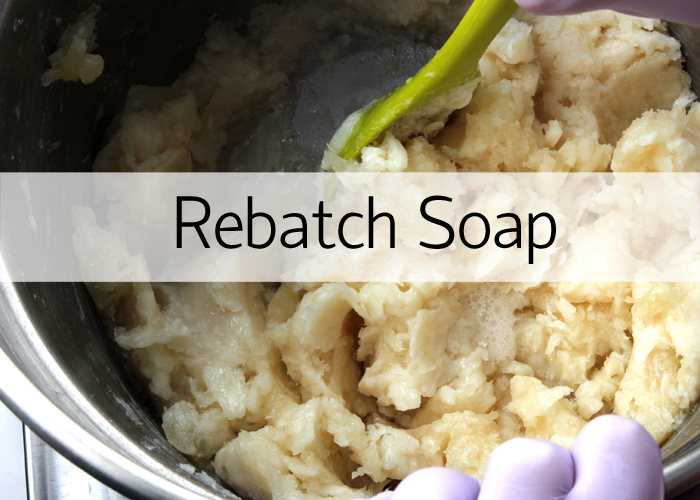
Pros:
- The base has already gone through saponification, so working with lye is not required.
- Does not require wearing safety gear because you’re not working with lye.
- Great for beginners!
- Rebatch soap is a great way to fix or use batches of soap that didn’t turn out quite right.
- Rebatch does not require the 4-6 week of cold process soap. In general, I recommend about 1-2 weeks of cure time, but it can be used once cut.
- The bars have a “rustic” appearance with a less smooth texture than cold process. Whether or not you like this look is a personal preference.
- Super simple to clean up.
Cons:
- The soap already went through saponification, so the recipe (oils, butters, etc) can not be customized.
- Fresh ingredients like milk and purees will eventually go bad in the soap.
- The bars have a “rustic” appearance with a less smooth texture than cold process. Whether or not you like this look is a personal preference.
- If your fragrance or essential oil has a low flashpoint, some soapers find the high temperature of rebatch soap can “burn off” the fragrance, causing it to fade.
- Due to the thick texture, swirls are difficult and layering, while not impossible, is a timing game with rebatch soap.
I love each and every method for different reasons, although my favorite method has to be cold process soap. I’m just a sucker for the swirls! What is your favorite method of soapmaking, and why?